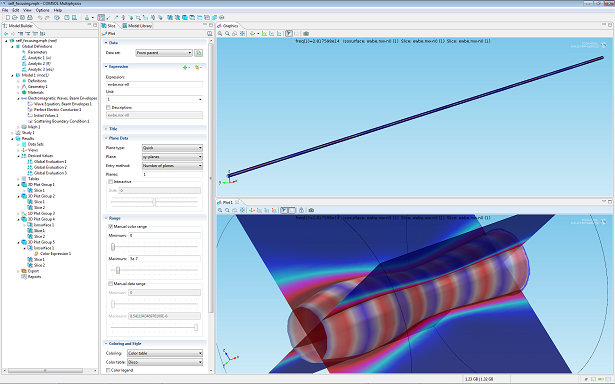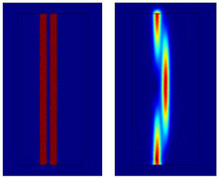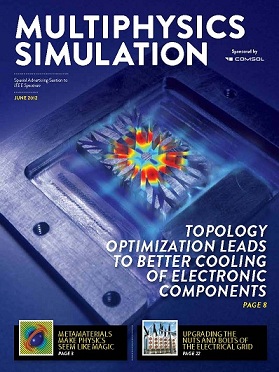Search Results

Taking Care of Fast Oscillations with the Wave Optics Module
The new COMSOL Multiphysics Wave Optics Module provides engineers with a great set of features for designing their simulations. One of the new capabilities included in this module is the groundbreaking beam envelope method for electromagnetic full-wave propagation. We hope this feature will become instrumental to the optics community.

Wave Optics, to Approximate or Not?
Engineers working with lasers, optical fibers and waveguides, nonlinear optical processes, metamaterials, and other large photonic devices ultimately deal with wave optics. Photonic devices are considered “large” when they are larger than a wavelength of light. In that case, you deal with optics frequencies as opposed to radio frequencies, and the device is not complex enough to justify approximating with rays.

How to Model Multiphysics in Multimaterial?
Dr. Raj Thiagarajan is a prolific producer of interesting research articles ranging from waste-water treatment to acoustics metamaterials, and lots in between. As the Managing Director at ATOA (“Atom TO Application”) Scientific Technologies, a COMSOL Certified Consultant, Raj has had to simulate all types of applications. Now he will show you how to use multiphysics simulations in multimaterial and composite product design.

Magnetic Shells Designed to Improve Energy Transfer
Engineers and scientists are known to step up to the challenges posed by nature. After developing an understanding of how the current object or process works, the next step often includes figuring out how to manipulate the situation to improve said object or process. One such example is cloaking; controlling light and sound waves to render something invisible. Phys.org recently ran a story on progressive research on controlling magnetic fields via cloaking to harvest and transfer energy using a magnetic […]

Halloween Special: Cloaking Devices and Capes of Invisibility
What if this Halloween you could take your costume to the next level and turn yourself invisible? There are bounds of references to invisibility throughout fairy tales, folk lore, and pop culture. From capes and hats to cloaking devices, many fictional characters have been provided with a means for rendering themselves invisible. In the spirit of Halloween, let’s have a closer look at cloaking from a fictional and scientific stand-point.

IEEE Spectrum’s Insert Cover Story Optimizes Electronics Cooling
The June issue of IEEE Spectrum included an insert focused on Multiphysics Simulation. This included a feature on cooling in hybrid cars, articles about metamaterials, the smart power grid, as well as biomedical applications.

Design Materials to Exhibit Wanted Properties
I’ve just been reading my favorite news service, www.physorg.com, and noticed that cloaking is once again the topic of the day. While we have previously reported on a group out of Duke University, this article mentions a group from Ames Laboratory in Iowa. Similar to the Duke Group, Costas Soukoulis from Ames Laboratory also seems to have been at the forefront of this research.

Now There’s Thermal Cloaking
As an avid reader of the physorg.com blog, I was pleasantly surprised to see a figure show up that could only have been made with COMSOL Multiphysics. Reading the article on thermal cloaking, I understood why.
